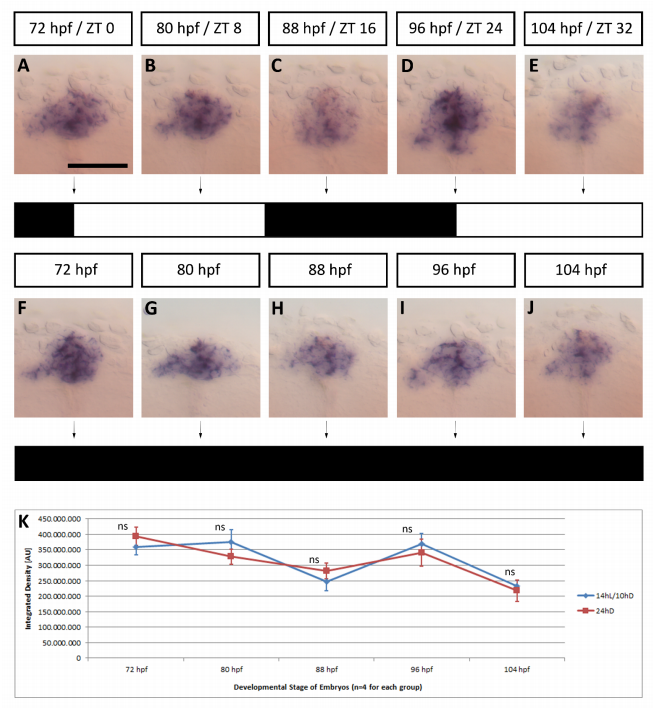Fig. S2
bsx mRNA tissue levels reveal little or no circadian rhythm regulation.
(A-E) Embryos were fixed at ages indicated in hours post fertilization (hpf) and at indicated zeitgeber time (ZT) with reference to 14 h light on / 10 h light off cycle during incubation. (F-G) Same experiment but embryos incubated in constant darkness from 2 hpf on. Zeitgeber time 0 was defined as the timepoint of light onset (for the light-entrained group) on the third day. (A-J) Fixed embryos were stained by in situ hybridization using bsx probe. Dorsal views of pineal complex in embryos, anterior is to the top. Scale bar: 50 µm. bsx expression shows little or no variation in intensity over the course of the day (n≥20 embryos for each condition). (K) Background adjusted integrated staining density in the pineal complex area of embryos kept in a 14 h light / 10 h dark cycle (blue) and embryos raised in complete darkness (red). Wilcoxon-Mann-Whitney test revealed no significant differences in staining intensity between the two groups at any of the assessed timepoints: p = 0.2000 (72 hpf), p = 0.0571 (80 hpf), p = 0.1143 (88 hpf), p = 0.4857 (96 hpf), p = 0.3429 (104 hpf).

